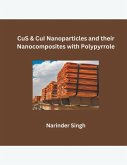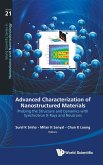Nanosized materials possess unique properties because of their sub micrometre size (less than 1µm) and thus find wide array of applications in optics, electronics and biology. In biology they are used for delivery of therapeutics molecules and drugs (nanocarrier), imaging, theranostic and ablation therapy. A wide range of biotechnological applications are served by recent advances in nano- formulation approaches and design of novel nanocarriers, capable of efficiently delivering biotherapeutic molecules. These nanosized structures are much more efficient than tradition therapies in delivering dugs and other molecules to specific locations in controlled manner, even at much smaller dosage. Conventional pharmaceutical delivery systems are marred with multiple issues like poor specificity, drug resistance induction and toxicity, which severely decreases therapeutic efficiencies. This is where nano-based delivery approach comes to rescue and improve rapid clearance, off -target effects, un-controlled release and toxicity issues. Nanocarrier based delivery approaches are mostly dedicated to transport chemotherapeutic cargos, composed of colloidal nonentities and possess a high surface area to volume ratio. Apart from delivering therapeutic cargoes Nano formulations are also used for theranostic and ablation therapies. Nano based delivery systems can be broadly categorised as organic nanocomplexes and inorganic nanoparticles-based formulations. These particles allow a great degree of manoeuvrability in terms of their composition (organic, inorganic or hybrid), shape (sphere, rod, multilamellar, hyperbranched etc.), size (small and large), and surface functionalization (PEGylation, targeting moieties, functional groups etc.) as per the specific requirement. Carbon based nanomaterials which exhibits high cargo loading and biocompatibility are known as organic nanocomplexes and can be used for delivery purposes. Preparation of organic nanocomplexes can be based on self-assembly properties of these molecules (amphiphilic systems), or requires specific synthesis procedure. Recently much attention is drawn by micelle like nanocomplexes prepared by amphiphilic polymer for drug delivery applications. Also, polymerosome have been reported which shows intracellular microenvironment and tumor responsive properties, which allows triggered payload release (pH, temperature gradient, redox etc.) and improved imaging sensitivity. Poly lactic acid (PLA), saturated poly glycolic acid (PGA), poly a-hydroxy esters, and poly lactic-co-glycolic acid (PLGA) copolymers are FDA approved and most commonly used synthetic polymer for drug delivery applications








